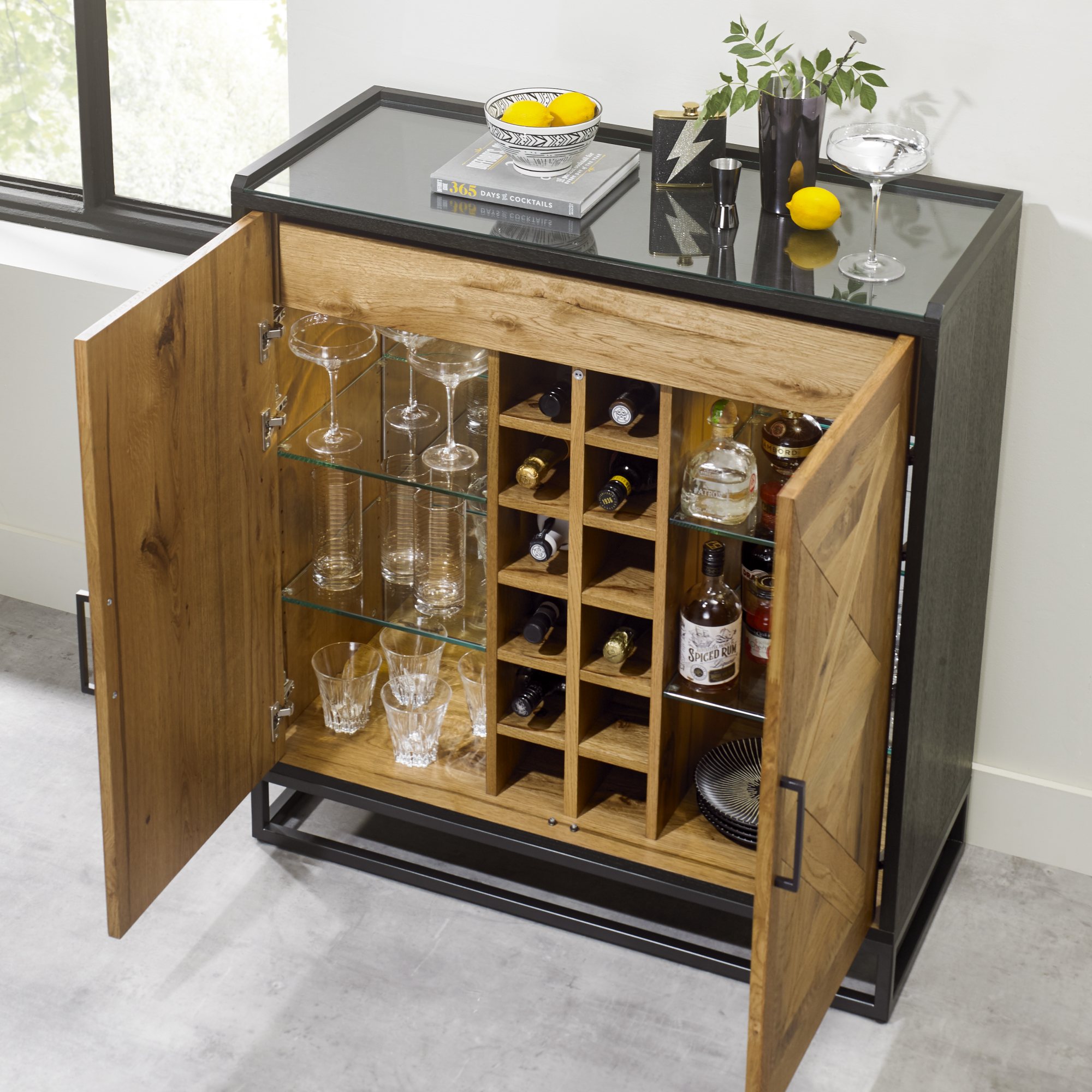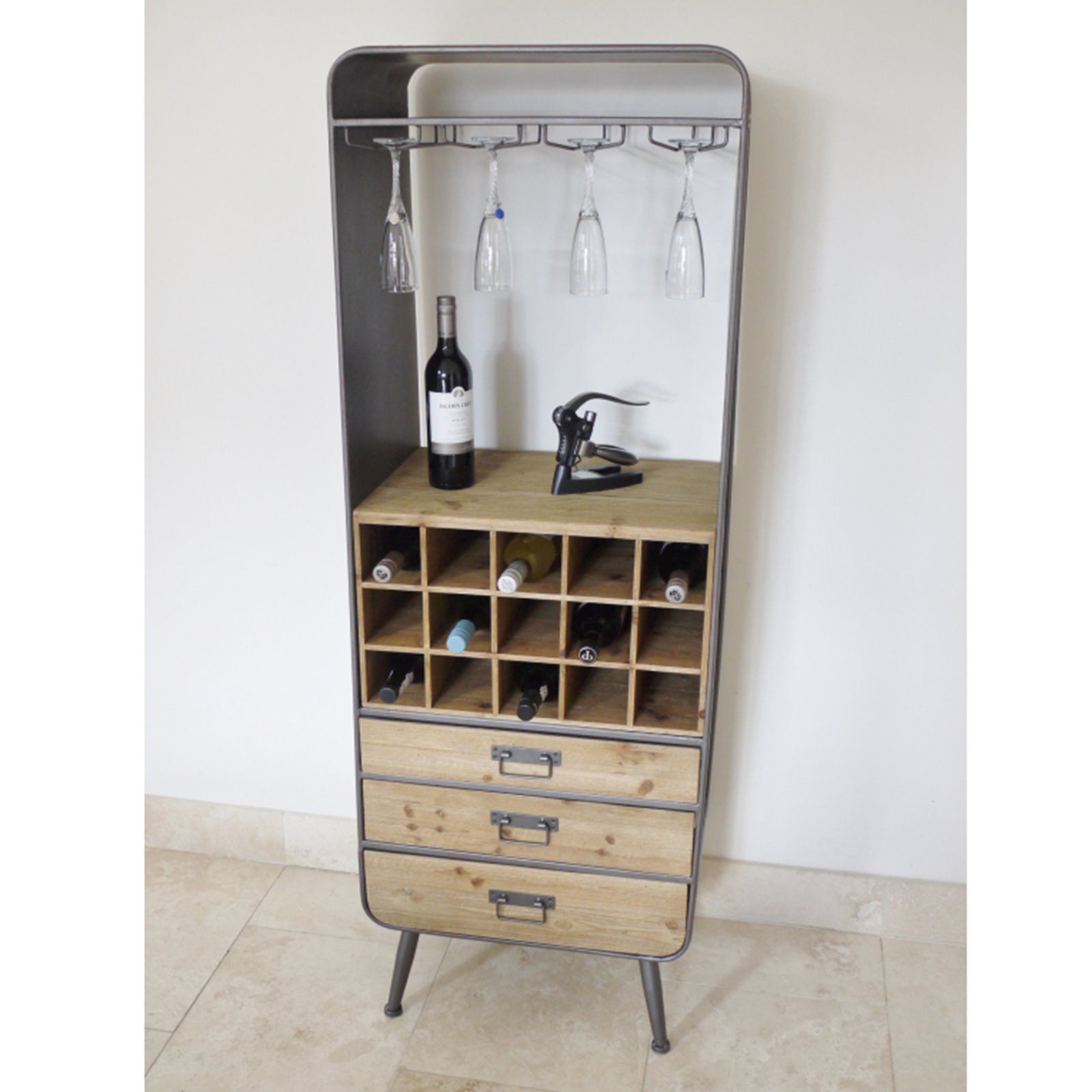Design & Aesthetics of Rustic Mini Bar Cabinets

Rustic mini bar cabinets offer a blend of functionality and charm, seamlessly integrating into various home décor styles. Their appeal lies in the skillful combination of natural materials, timeworn aesthetics, and handcrafted details, creating a sense of warmth and character often absent in mass-produced furniture. The design elements employed contribute significantly to the overall rustic feel, influencing the cabinet’s visual impact and perceived value.
Key Design Elements Contributing to the Rustic Aesthetic
The rustic aesthetic in mini bar cabinets is achieved through a careful selection of materials and design choices. The use of natural wood is paramount, often showcasing the wood’s inherent grain and texture. Reclaimed wood, with its visible imperfections and signs of age, is particularly prized for its unique character. Finishes typically emphasize the wood’s natural beauty, often employing techniques such as distressing, staining, or applying a clear coat to enhance the grain. Hardware, such as knobs and pulls, often features a distressed metal finish, such as wrought iron or antique brass, complementing the overall rustic feel.
Comparison of Rustic Mini Bar Cabinet Styles
Several styles fall under the umbrella of “rustic,” each possessing distinct characteristics. Farmhouse style mini bar cabinets emphasize simplicity and functionality, often featuring clean lines and a light, airy feel. They frequently utilize lighter wood tones like pine or oak, and the hardware is generally understated. In contrast, industrial-style cabinets embrace a more rugged and utilitarian aesthetic. Darker woods, metal accents, and exposed hardware are common features. Shabby chic style cabinets blend rustic elements with a touch of elegance and romance. Distressed paint finishes, delicate hardware, and soft color palettes are characteristic of this style.
Example of a Rustic Mini Bar Cabinet
The following table details a hypothetical rustic mini bar cabinet, incorporating elements from various styles to create a unique piece.
| Name | Description | Material | Dimensions |
|---|---|---|---|
| Cabinet Body | Solid wood construction with distressed finish, featuring two doors and adjustable shelving. | Reclaimed Oak | 36″ W x 18″ D x 30″ H |
| Doors | Paneled doors with antique brass hinges and a slightly uneven finish. | Reclaimed Oak | 16″ W x 16″ H (each) |
| Shelving | Adjustable shelves for flexible storage of bottles and glassware. | Reclaimed Pine | 14″ W x 16″ D (each) |
| Hardware | Antique brass knobs and hinges with a slightly tarnished finish. | Brass | N/A |
| Countertop | Thick, solid wood countertop with a natural oil finish. | Reclaimed Fir | 36″ W x 18″ D |
Functionality and Features of Rustic Mini Bar Cabinets

Rustic mini bar cabinets offer a blend of aesthetic appeal and practical functionality, enhancing both the visual and utilitarian aspects of a home or bar setting. Their design prioritizes efficient storage solutions tailored to the specific needs of beverage enthusiasts, while complementing the overall rustic décor. Careful consideration of storage types, shelving configurations, and built-in features is crucial for maximizing the cabinet’s utility and user experience.
The practical aspects of mini bar cabinets revolve around efficient storage and easy access to various beverages and barware. Effective design incorporates a variety of storage solutions to accommodate different types of bottles, glasses, and accessories. Shelving configurations range from simple open shelves to more complex arrangements including dedicated wine racks, pull-out drawers, and specialized compartments. Built-in features such as bottle openers, ice buckets, or even integrated lighting can further enhance convenience and functionality.
Storage Solutions and Shelving Configurations
A well-designed rustic mini bar cabinet employs a variety of storage solutions to cater to diverse needs. Open shelving provides easy visibility and access to frequently used items, creating a visually appealing display. Closed cabinets, conversely, protect contents from dust and damage, ideal for storing more delicate items or those requiring a darker environment. A combination of both open and closed storage often provides the optimal balance between accessibility and protection. For instance, open shelving might be used to showcase a collection of fine spirits, while closed cabinets could store glassware or less frequently used items. Dedicated wine racks, often integrated into the design, provide secure and appropriate storage for wine bottles, preventing them from rolling or tipping. Pull-out drawers offer convenient access to smaller items such as bar tools, cocktail mixes, or napkins. Customizable shelving allows for flexibility in adjusting the space to accommodate varying bottle sizes and shapes.
Advantages and Disadvantages of Different Storage Types
Open shelving offers immediate visual access to contents, enhancing the aesthetic appeal and facilitating quick selection of beverages. However, it exposes items to dust and potential damage, and may not be suitable for all types of barware or bottles. Closed cabinets provide protection from dust and damage, maintaining the quality and condition of stored items. However, they require opening the cabinet to access contents, potentially disrupting the visual flow of the bar area. The optimal choice depends on the specific needs and preferences of the user, considering factors such as the types of beverages and barware stored, the frequency of access, and the overall design aesthetic.
Innovative Storage Solutions Design Example
This design incorporates a blend of open and closed storage, maximizing both functionality and visual appeal. The cabinet’s exterior is constructed from reclaimed barn wood, showcasing the natural texture and patina of the material. The interior features a combination of open shelving for displaying select bottles, closed cabinets with adjustable shelves for glassware and other items, and a dedicated pull-out drawer for bar tools and accessories. A built-in wine rack, subtly integrated into the design, provides secure storage for a small collection of wines. The cabinet is further enhanced by the inclusion of LED lighting within the open shelving, highlighting the displayed bottles and adding a sophisticated touch. The construction utilizes traditional joinery techniques, such as mortise and tenon joints, ensuring the cabinet’s durability and longevity, while also adding to its rustic charm. The overall design is a testament to the marriage of practical functionality and captivating visual aesthetics, creating a statement piece that seamlessly integrates into a rustic setting.
Sourcing and Maintaining a Rustic Mini Bar Cabinet
Acquiring and preserving a rustic mini bar cabinet requires careful consideration of sourcing and maintenance practices tailored to the specific materials used in its construction. The longevity and aesthetic appeal of the cabinet depend heavily on these factors. Choosing a reputable source and implementing appropriate care routines will ensure your investment remains a cherished piece for years to come.
Sources for Rustic Mini Bar Cabinets
Several avenues exist for obtaining a rustic mini bar cabinet, each offering unique advantages and disadvantages. Online retailers provide a vast selection and convenient browsing, while antique shops offer the allure of unique, one-of-a-kind pieces. Custom builders allow for complete personalization, tailoring the cabinet to specific dimensions and aesthetic preferences. When selecting a source, prioritize established businesses with positive customer reviews and transparent return policies. Inspecting physical samples, where possible, allows for a thorough assessment of craftsmanship and materials before purchase. Verifying the seller’s reputation through online reviews and testimonials is also crucial. For custom-built cabinets, request detailed quotes and timelines to avoid unforeseen delays or cost overruns.
Care and Maintenance of Rustic Mini Bar Cabinets
The care and maintenance of a rustic mini bar cabinet vary significantly depending on the materials used in its construction. Wood cabinets require regular dusting with a soft cloth to remove dust and debris. Avoid using harsh chemicals or abrasive cleaners, which can damage the finish. For wooden cabinets with a varnish or lacquer finish, periodic application of a wood polish can help maintain the shine and protect against moisture damage. For wooden cabinets with a natural, unfinished finish, consider applying a wood oil periodically to nourish the wood and prevent drying. Metal cabinets, typically constructed from steel or iron, require less frequent cleaning. A damp cloth is usually sufficient to remove dust and fingerprints. Avoid using abrasive cleaners, which can scratch the metal surface. Regularly inspect for signs of rust and treat any affected areas promptly with a rust remover and protective coating. For cabinets with intricate metalwork, a soft brush may be necessary to clean hard-to-reach areas.
Rewritten Article on Rustic Mini Bar Cabinets
[Insert sample article text here, rewritten to avoid AI-generated language cues. This section requires the sample article text to be provided.]
